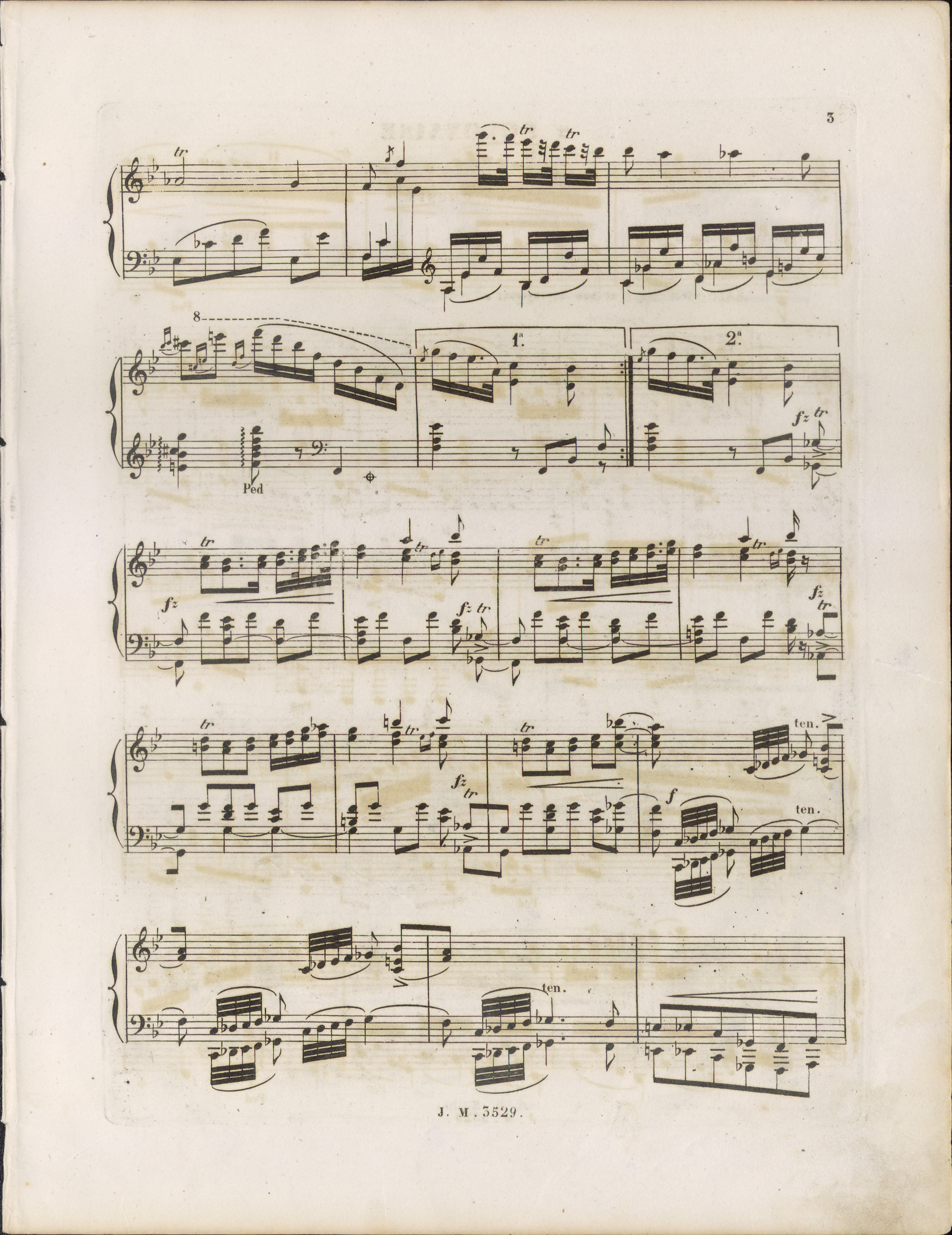



None of the source versions of the 1st quaver in the present bar (together with grace notes) is completely certain:
- It is the version of PE (our main text) that inspires the major confidence; its notation is faultless and it is both musically and pianistically logic. A possible editorial revision cannot be entirely excluded (e.g. adding one of the sharps), yet in this case it seems to be highly unlikely. The graphic similarity of the notation of JC and PE has drawn our attention, despite the fact that each of those sources was based on different autographs. It constitutes another strong argument for the validity of this version.
- The version of EF seems to be least reliable, first of all, due to the difference of the graphic layout in comparison with JC, based on the same autograph. The difference could be possibly explained with the copyist's misunderstanding of some inaccurately marked corrections in [AI], yet it is much more probable that it was Fontana who tried to correct the erroneous – according to him – notation of the autograph in his edition. In EF, the grace notes are provided with slurs, which most probably are also Fontana's additions.
-
The literally read version of JC, with the c3-c4 octave overlapping c
 2 in the L.H., seems to be impossible from the harmonic point of view, although it is pianistically convenient. The slip may be corrected by adding a
2 in the L.H., seems to be impossible from the harmonic point of view, although it is pianistically convenient. The slip may be corrected by adding a  raising c4 into c
raising c4 into c 4, which is our proposal as a probable interpretation of this manuscript. Another possibility is a mistakenly written
4, which is our proposal as a probable interpretation of this manuscript. Another possibility is a mistakenly written  instead of a
instead of a  before the second grace note, which leads to the version of PE.
before the second grace note, which leads to the version of PE.
In the notation of JC, it is the cautionary  before b
before b 2 at the beginning of the bar that draws our attention; it is probably authentic. In the main text we do not consider cautionary signs in this place, assuming the risk of a misreading to be marginal.
2 at the beginning of the bar that draws our attention; it is probably authentic. In the main text we do not consider cautionary signs in this place, assuming the risk of a misreading to be marginal.
Compare the passage in the sources »
category imprint: Interpretations within context; Differences between sources
issues: Errors of JC
notation: Pitch




